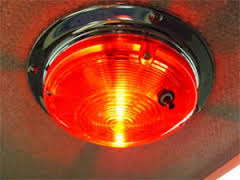
The Pascometer has been traveling better recently, pounded into submission by MB and critically liberated by a new government, but today, alas, it’s back to old tricks:
The Reserve Bank’s efforts to jawbone the Aussie down seemed to be going nicely last week, strategically aligned as they were with the hope and/or expectation of the increasing speculation about US Federal Reserve tapering.
If Friday night’s US payrolls figures came in a bit better than expected, the Aussie was sure to weaken. Turns out the payrolls did but the Aussie didn’t. Yes, forecasting is a mug’s game.
A rational approach to expectations of weaker terms of trade and the Americans easing up on debasing the greenback would conclude that the Australian dollar trend should still be downwards, but business expectations in a new survey on the forex outlook and the double-edged nature of a stronger US economy indicate the Aussie won’t go down without a fight.….What’s in prospect in 2014 is the world’s two biggest economies growing quite nicely and Japan doing better than we’re used to. Europe remains sick and, in some ways, that’s not an entirely bad thing, as long as you’re not European. The last time there was good synchronised growth, the world was launching into an unsustainable bubble. For the sake of cementing the recovery, commodity prices are quite high enough, thankyou very much.Without going that far, it is possible that our biggest export earner, iron ore, will continue to defy even the more optimistic forecasters. Absolutely nobody at the start of this year thought Pilbara rust would still be nudging $US140 a tonne in December. There are plenty of perma-bears who’ve been predicting its collapse ever since it recovered from the initial GFC shock. One of these days, if they live long enough, they’ll possibly be correct, but it doesn’t look like happening today or tomorrow.
So for all we might wish the Aussie was weaker to help our transition out of phase 2 of the commodities boom (digging the new holes), phase 3 (exporting the stuff from those holes) is still growing, still supporting our reputation as a commodity play currency. The stronger for longer China will do that, even when the country’s steel industry doesn’t make profit.
Wrong. The Australian dollar did not fall when it did by some cosmic miracle. It fell after the May rate cut suddenly made it plain to dollar carry traders that they faced an unacceptable risk of currency loss as their spreads got compressed.
Just as certainly, if you re-engineered our macro settings, for instance via macroprudential policy and interest rates at 1%, then rest assured that the dollar would take another big leg down.
As Glenn Stevens has also made quite clear, unless the dollar falls then the rebalancing away from mining that we need to sustain growth won’t happen. And if rebalancing doesn’t happen, then the dollar is most definitely going to fall.
It’s not random unless you want to look at it through the prism of a single day. It’s not cause for clever puns or jibes or parlor games. We are fighting for our lives in a global currency war and we are losing.

